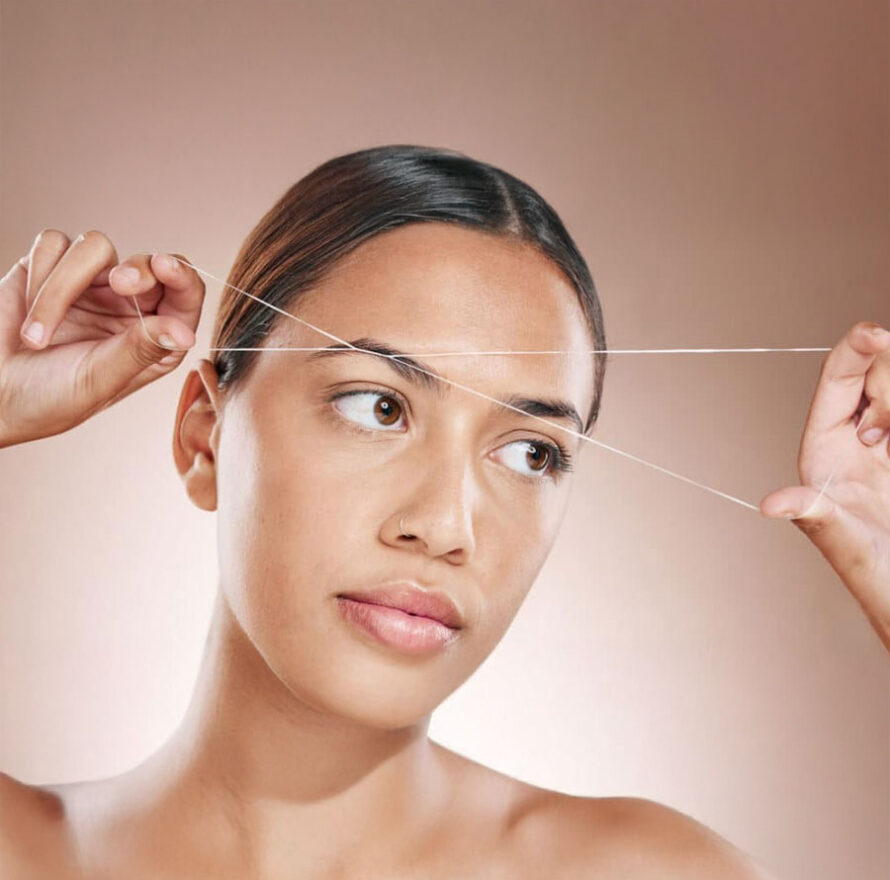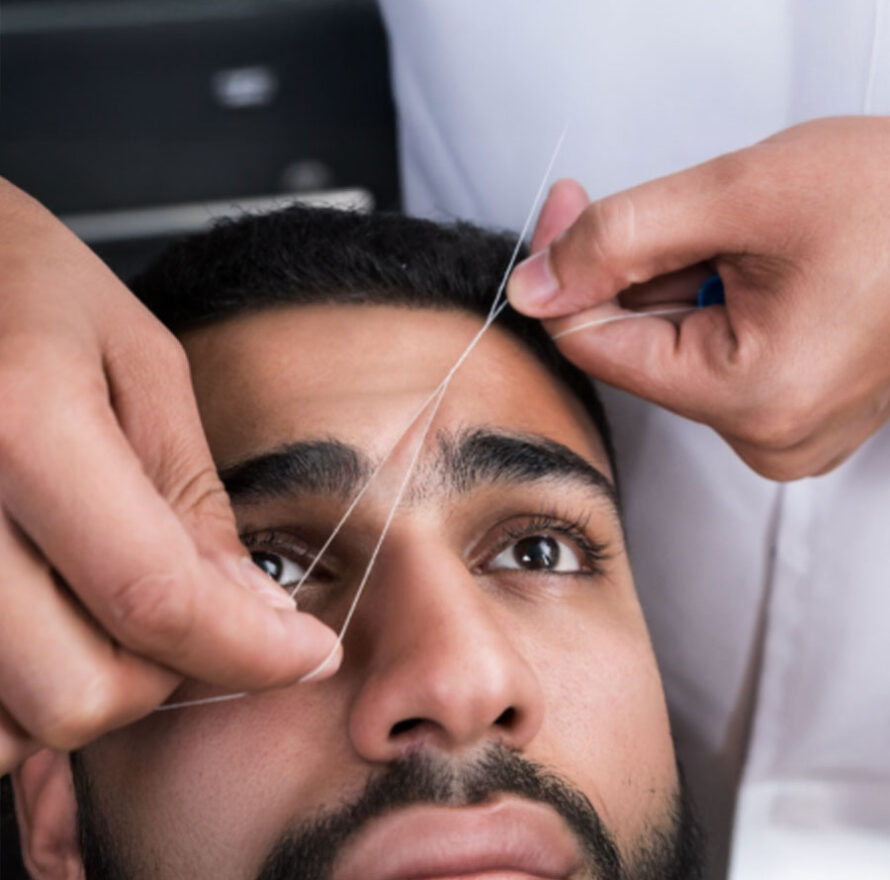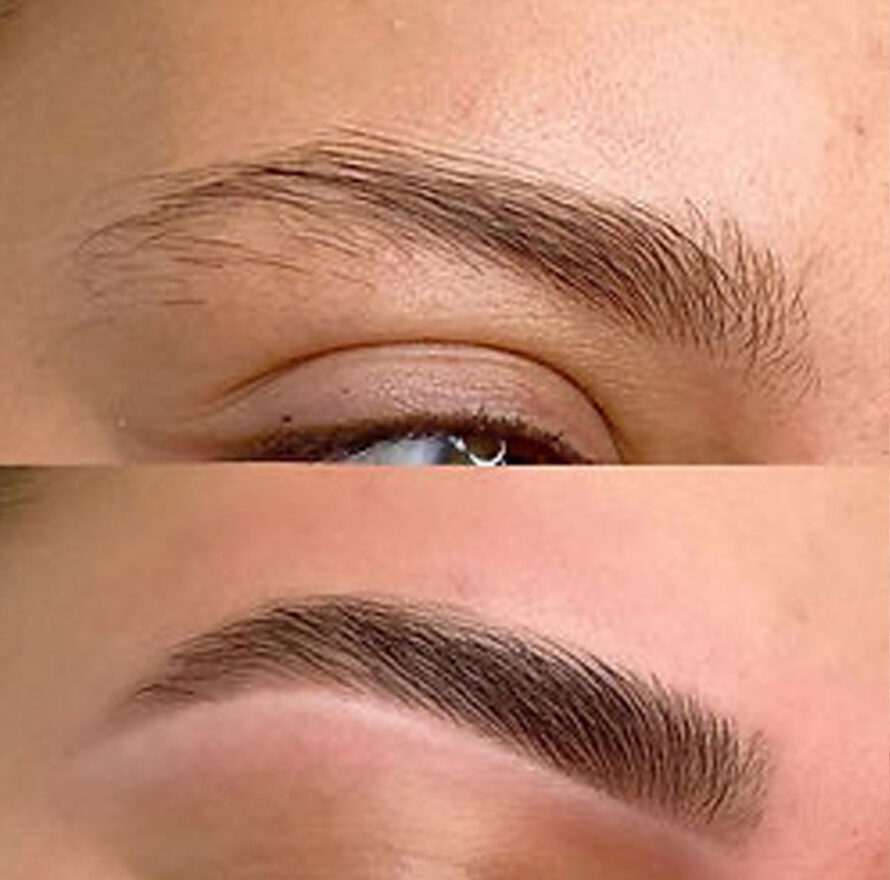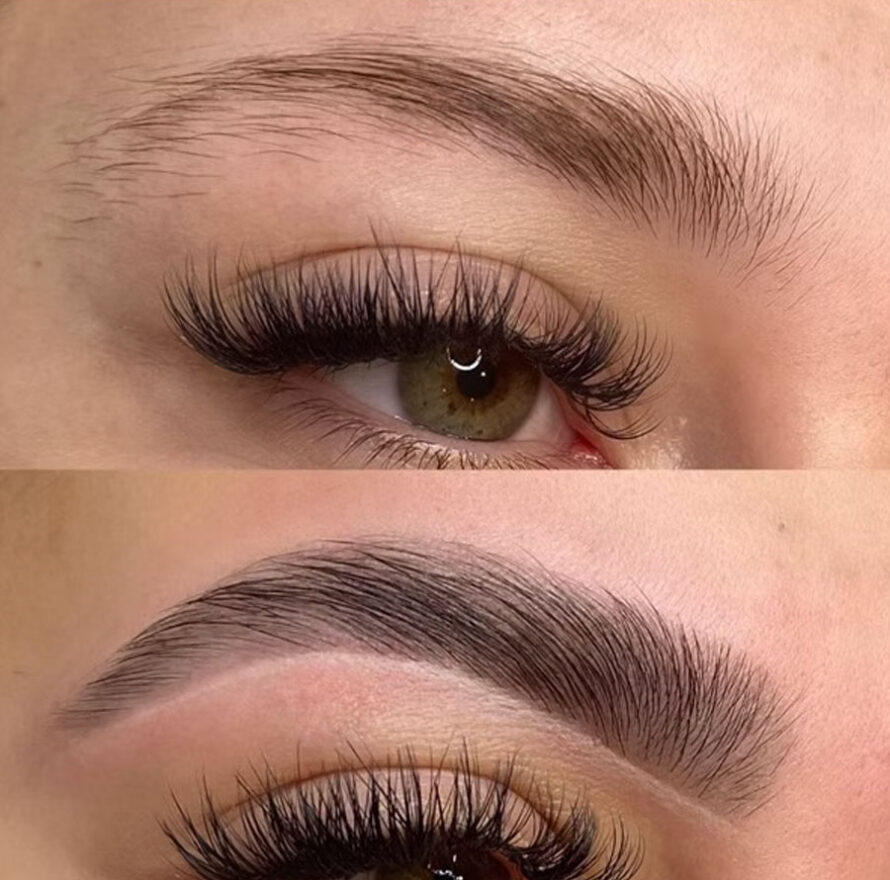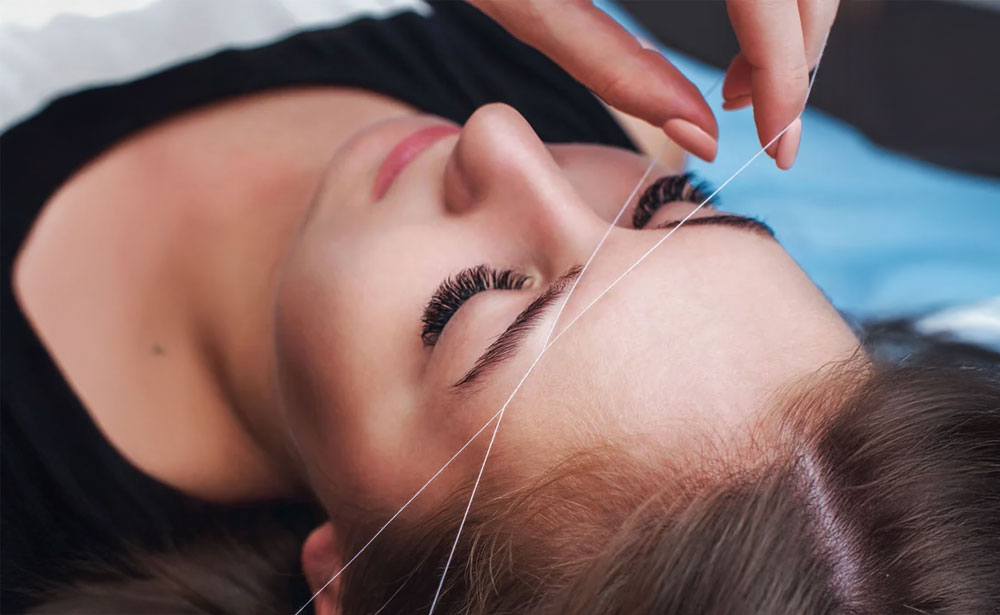Service Description:
Threading is an ancient hair removal technique originating from the Middle East and South Asia. Utilizing a cotton thread twisted and rolled across the skin, threading precisely and gently removes unwanted facial hair from the root. This treatment is renowned for shaping eyebrows, upper lips, chin, and other facial areas, delivering beautifully defined results quickly and efficiently.
Advantages:
-
-
-
Precision and Accuracy: Perfectly shapes eyebrows and facial areas with superior control, creating clean and defined results.
-
Long-Lasting Results: Hair is removed from the root, prolonging hair regrowth compared to other methods like shaving.
-
Gentle on Sensitive Skin: No chemicals or artificial ingredients involved, reducing risks of irritation, redness, and sensitivity.
-
Quick and Efficient: Threading takes only a few minutes, making it convenient for busy lifestyles.
-
Safe and Hygienic: Uses a new, sterile cotton thread for each client, reducing any risk of cross-contamination.
-
Suitable for All Skin Types: Ideal for sensitive or acne-prone skin, preventing irritation common with waxing or shaving.
-
Minimal Discomfort: Causes minimal discomfort compared to waxing, particularly beneficial for delicate skin.
-
No Chemicals: Chemical-free, avoiding risks associated with depilatory creams or wax residues.
-
Immediate Results: Offers instant, visibly smoother skin without redness or irritation.
-
-
Disadvantages:
-
-
Temporary Slight Discomfort: Mild sensation during treatment, usually tolerable.
-
Short-Term Redness: Possible minor redness immediately post-procedure, fading quickly.
-
Best Deals
Threading Eyebrows Price

Threading Eyebrows
Frequently asked questions
Typically, threading results last between 2-4 weeks, depending on individual hair growth cycles.
Threading typically involves less discomfort than waxing, making it ideal for sensitive skin.
Yes, threading is excellent for sensitive skin as it involves no chemicals and minimizes skin irritation.
Threading generally takes only about 5-15 minutes, depending on the area treated.
It’s extremely rare; minor redness immediately afterward is the most common reaction, quickly subsiding.
